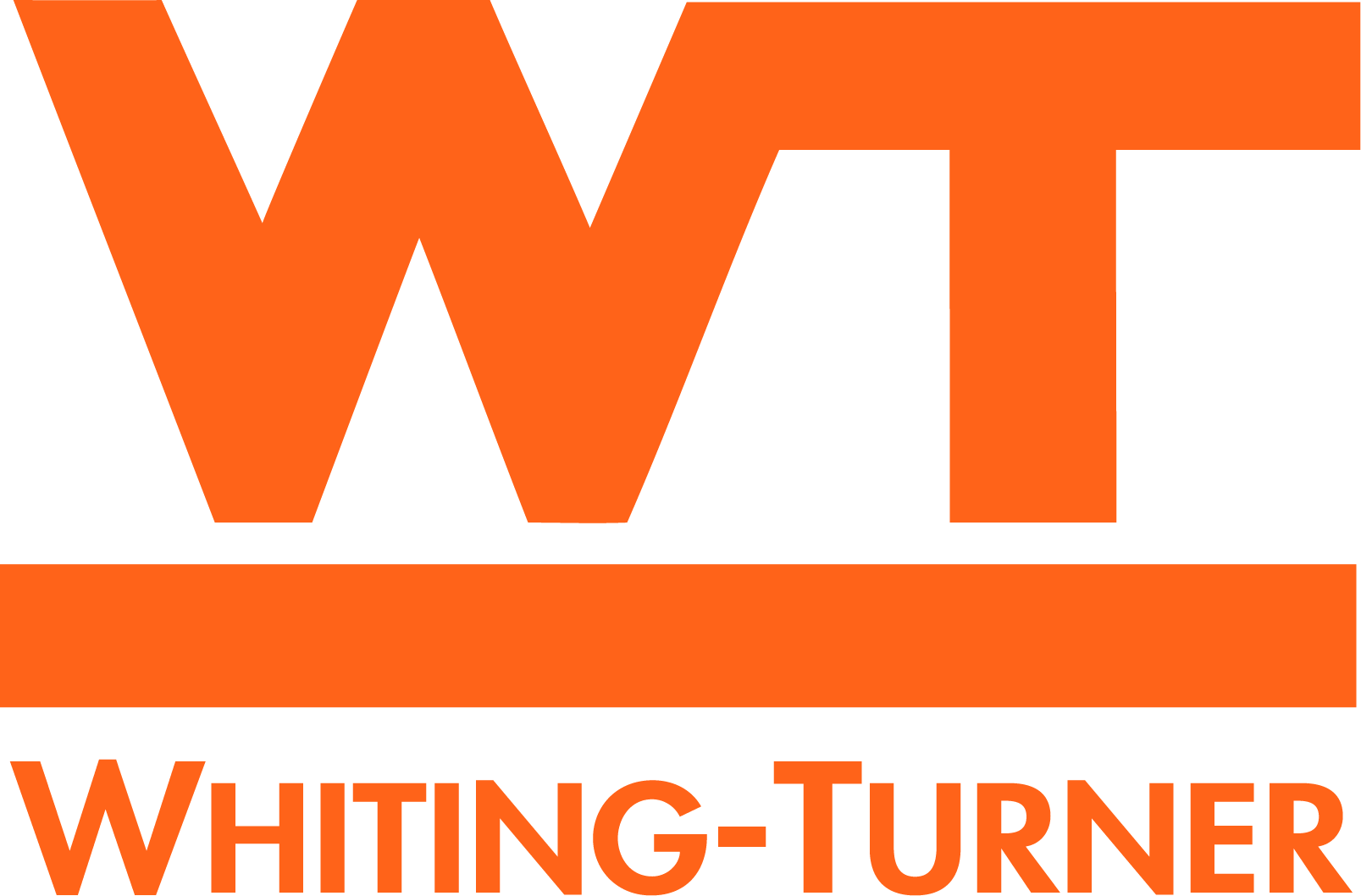
This guide for subcontractors and suppliers can help you learn more about Whiting-Turner before you sign a subcontract. Although working with a large general contractor often presents an incredible financial opportunity, the construction industry is known for slow payments and cash flow issues. When it comes to fighting slow payment, information is one of your best weapons.

Even though not every payment issue stems from the general contractor, it’s important to familiarize yourself with their payment history, prequalification process, and general payment process to make sure you know what you’re getting into. You can even use the payment tips from this guide for other projects you participate in.
About Whiting-Turner Contracting
The Whiting-Turner Contracting Company was founded in 1909 by G.W.C. Whiting and LeBaron Turner. Since their humble beginnings, Whiting-Turner has grown to be one of the largest and most reputable general contractors in the nation, with $8.4 billion in revenue in 2018. Whiting-Turner places fourth on the ENR Top 400 Contractors list for 2020.
Whiting-Turner has 27 offices around the United States, located in the Mid-Atlantic, Northeast, Midwest, Southeast, Southwest, and West.
One of the reasons why Whiting-Turner is unique among other general contractors is because they’re financially independent. With a bonding capacity of $4 billion and no debt to manage, Whiting-Turner is one of the most stable GCs in the country.
Like the nation’s other top general contractors, Whiting-Turner operates in a large variety of markets. A few of the most noteworthy include energy, entertainment, federal and military, healthcare, hospitality, and retail.
Notable projects
Whiting-Turner also has some very large projects under their belt:
- The Stanford Replacement Central Energy Facility (Stanford, CA – $438M)
- Harrah’s Cherokee Valley River Casino & Hotels (Murphy, NC – $250M)
- NASA Integrated Engineering Services Building (Hampton, VA – $26M)
- Johns Hopkins Community Psychiatry Facility (Baltimore, MD)
- The Palms Casino Resort Fantasy Tower (Las Vegas, NV – $80M)
- Bass Pro Shops Outdoor World (Round Rock, TX)
Whiting-Turner provides services like construction management, general contracting, design/building, and more for construction projects of all sizes. You can learn more about Whiting-Turner’s services and background on their About Us page.
Before Working With Whiting-Turner
Before you begin bidding on projects, it’s always a good idea to prequalify the general contractor. This process helps you determine whether or not the GC and the project are right for you, and it can be done in five steps.
- Review their payment history
- Check their credit history
- Learn from other subcontractors who have worked the GC
- Learn their general payment process
- Review a sample subcontract
Doing a thorough prequalification should be part of your process for any general contractor you wish to work with. If there are any red flags, you can turn your attention to projects that are better aligned with your company’s financial goals.
Review Whiting-Turner’s Payment History
You can begin your prequalification on Whiting-Turner’s payment history page. Here, you can view the GC’s payment history, subcontractor reviews, review recent payment disputes, and get an idea for how quickly they pay.

Whiting-Turner has a “C” Pay Score. Pay Score is calculated by comparing a GC’s recent payment history with thousands of other GCs around the country. You can use it to get a feel for their payment speed on recent projects.
Despite Whiting-Turner’s low pay score, they have a subcontractor rating of three out of five stars, which indicates a good number of positive experiences. These ratings come from subcontractor reviews of Whiting-Turner on their payment profile.
32% of subcontractors who left a review on Whiting-Turner’s payment profile gave them five stars, with glimmering reviews like:
- “Perfect, as always.”
- “They were professional, communicative, and pleasant to work with.”
- “These guys were professional to work with and paid out in a timely manner.”
20% of subcontractors gave them a three-star review:
- “Slow, but paid on time.”
28% of subcontractors left a one-star negative review:
- “Still haven’t paid!!! Will not accept any more work from these guys.”
- “I had to threaten legal action to get paid. I ended up filing a lien. I won?”
- “Still haven’t paid for a job in 2017.”
Recent Payment Disputes
Whiting-Turner has participated in a few construction projects that have attracted mechanics liens in recent months.
Sawgrass Mills
Several subcontractors filed mechanics liens on a South Florida mega-mall renovation gone awry, claiming unpaid amounts that total over $2 million. Whiting-Turner themselves filed a mechanics lien against the owner to the amount of $220K.
Orlando Vineland Premium Outlets
This Orlando development experienced some payment issues after renovations began in 2019. Three contractors, including Whiting-Turner, filed mechanics liens on the project which claim more than $1.8 million in unpaid construction bills.
Apart from those two major disputes, Whiting-Turner’s payment history places them in the bottom 20% of major general contractors.
It is important to note, however, that not all payment disputes are caused by the general contractor, and that not every subcontractor that files a mechanics lien is contracted by the GC. There are many reasons for payment disputes, and unfortunately, they’re not uncommon in the construction industry.
How to Get Prequalified to Work with Whiting-Turner
The first step to working with Whiting-Turner is to go through their prequalification process. Every large general contractor has their own prequalification system, and Whiting-Turner is relatively transparent.
Whiting-Turner uses BuildingConnected to prequalify prospective subcontractors. BuildingConnected is a software that allows general contractors to connect with new subcontractors, manage bids, and quickly access qualification information from new subcontractors.
Subcontractors can also use the BuildingConnected network to connect with new general contractors, simplify the prequalification process, and keep bids organized.
To get started, visit Whiting-Turner’s Subcontractors page. From there, you can download the Subcontractor Prequalification Statement and begin filling it out.
Here’s a rundown of the information you’ll need to provide in order to complete the prequalification form:
- A sample insurance certificate
- A financial statement
- QC/QA program (if applicable)
- General information about your company’s representative
- Your company’s tax information
- Your DUNS number
- Information about current and past projects
- Which states you operate in
- License numbers for each state you work in
- 10 representative projects
- Three subcontractors or suppliers for references
- Information about your company’s principal members
- Union information
- Bonding information
- Safety information
- Safety incidents
- OSHA certification information
- Insurance information
- A financial picture for your company
After you complete the prequalification questionnaire, you can attach the file to the contact form on the subcontractors page. Select the local office you wish to send the form to, click submit, and your information will be sent to the appropriate place at Whiting-Turner.
If you’re a supplier, you can check out what kinds of materials Whiting-Turner is interested in buying before making contact and going through prequalification. Since Whiting-Turner is a massive company, there should always be a demand for high-quality materials for their various construction projects around the nation.
Whiting-Turner Contracting’s Payment Process
After you get prequalified to work with Whiting-Turner, it’s time to make sure you understand their payment process.
Having an idea for how payment will work on a project is a great way to ease payment down the line and reduce the risk for any payment-related disputes.
Additionally, going to the project administrator with any questions gives you the chance to carry out a proper introduction and could work to improve your relationship with the GC.
Much like sending a preliminary notice improves visibility on a project, GCs like to know they’re working with professional and organized subs — and putting forth the effort to follow their company payment procedures gives that impression.
Before the Job Begins
Before you step foot on the job site, Whiting-Turner will request some information from you. Usually, this includes:
- Your W-9
- Your proof of insurance
- A copy of the signed subcontract
- Bond information
After these documents are received and reviewed, work on the project can begin.
Applying for First Payment
You can use the AIA billing forms to request your first payment and all subsequent payments from Whiting-Turner. The most common AIA forms are the G702 Payment Application and the G703 Continuation Sheet.
Make sure the information you include on your pay app is as accurate as possible — making a mistake at this state could create payment issues down the line. Generally, pay applications are due on the 20th day of the month.
Applying for Progress Payments
Progress payments have multiple benefits on a construction project. First of all, they do a great job regulating cash flow, which is a major pain point for many contractors. Construction labor and materials cost money, and if a contractor runs out of it before they get paid, a slew of complications could arise.
Secondly, they help the general contractor keep track of a subcontractor’s progress on a project. Anything that keeps parties in the loop and fosters transparency on the job contributes to a smooth and complication-free experience overall.
Generally, you’ll need to provide the GC with a thorough pay application and a schedule of values to apply for progress payments. In some cases, you may need to sign a lien waiver. Your project administrator will let you know if Whiting-Turner requires any other documentation.
Applying for Final Payment
When the project is approaching its end, it’s time to start thinking about final payment and the close-out process.
The close-out process for major general contractors like Whiting-Turner usually follows the same trajectory:
- Submit your last pay app
- Complete any requested close-out documents
- Sign any required lien waivers
- Provide consent of surety (if applicable)
3 Tips for Getting Paid with Whiting-Turner
No matter the project or the general contractor, subcontractors and suppliers should always do everything they can to protect their payment rights. Here are three things you can do that help the payment process on every project.
1. Send a preliminary notice
Sending a preliminary notice on every project has multiple benefits. For one, they increase visibility by letting everyone know who you are and what you’re doing. This is especially beneficial for larger projects.
Secondly, contractors who send preliminary notices tend to get paid before contractors who don’t. Thirdly, sending a preliminary notice reduces the chance of a communication breakdown on the project, which prevents payment delays and other headaches.
2. Review any lien waivers
Lien waivers are commonly exchanged at the end of construction projects. They’re essentially agreements between subcontractors and paying parties that forfeit mechanics lien rights in exchange for payment.
The best thing you can do is look over any lien waivers with a construction attorney to make sure signing the waiver is in your best interest.
3. Make sure your lien rights are secure
Protecting your right to file a mechanics lien is one of the best ways to make sure you get paid on a project. That’s because mechanics liens are powerful sources of leverage for contractors if they go unpaid.
No matter which state you’re in, you must meet and maintain certain requirements throughout the project to keep your lien rights intact. This usually includes sending the correct notices, having a license for the work you’re doing, and meeting certain deadlines. Each state has different laws, so make sure you understand the mechanics lien requirements in your state.
